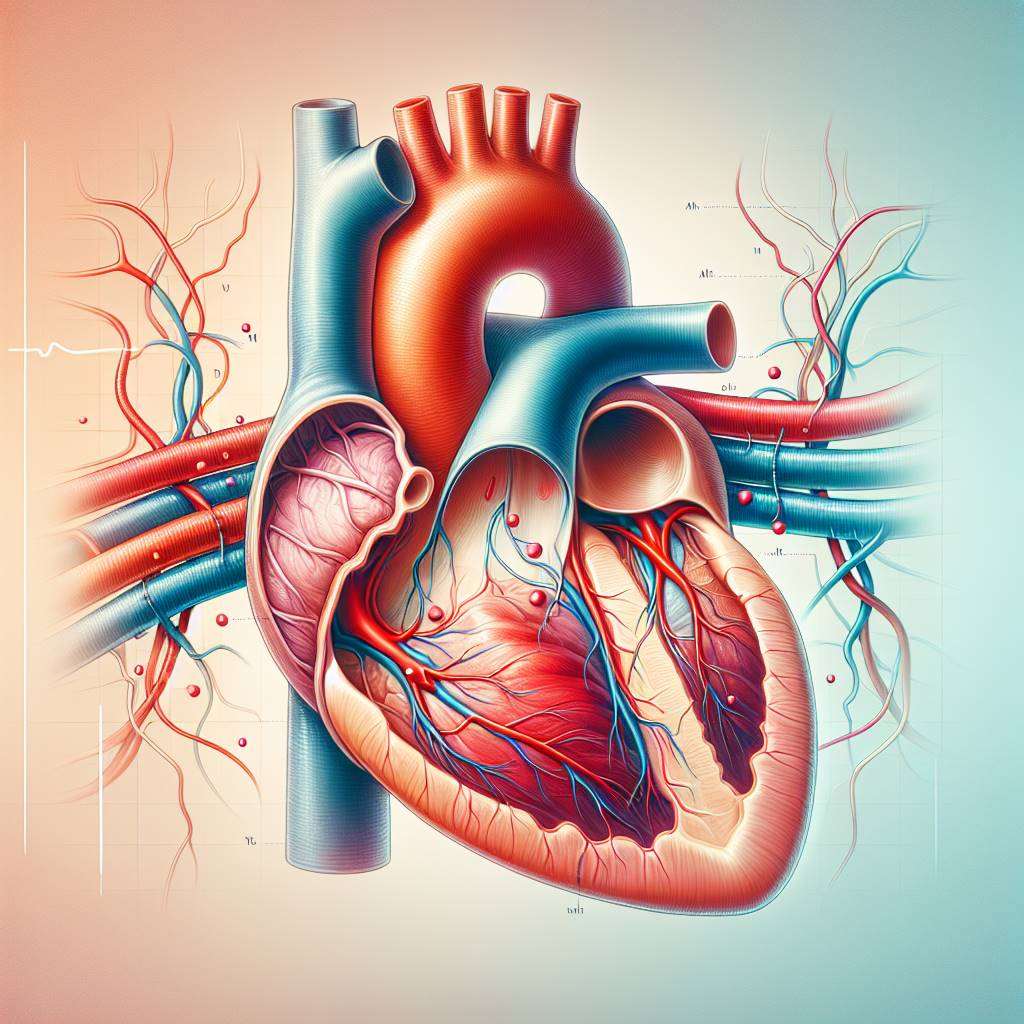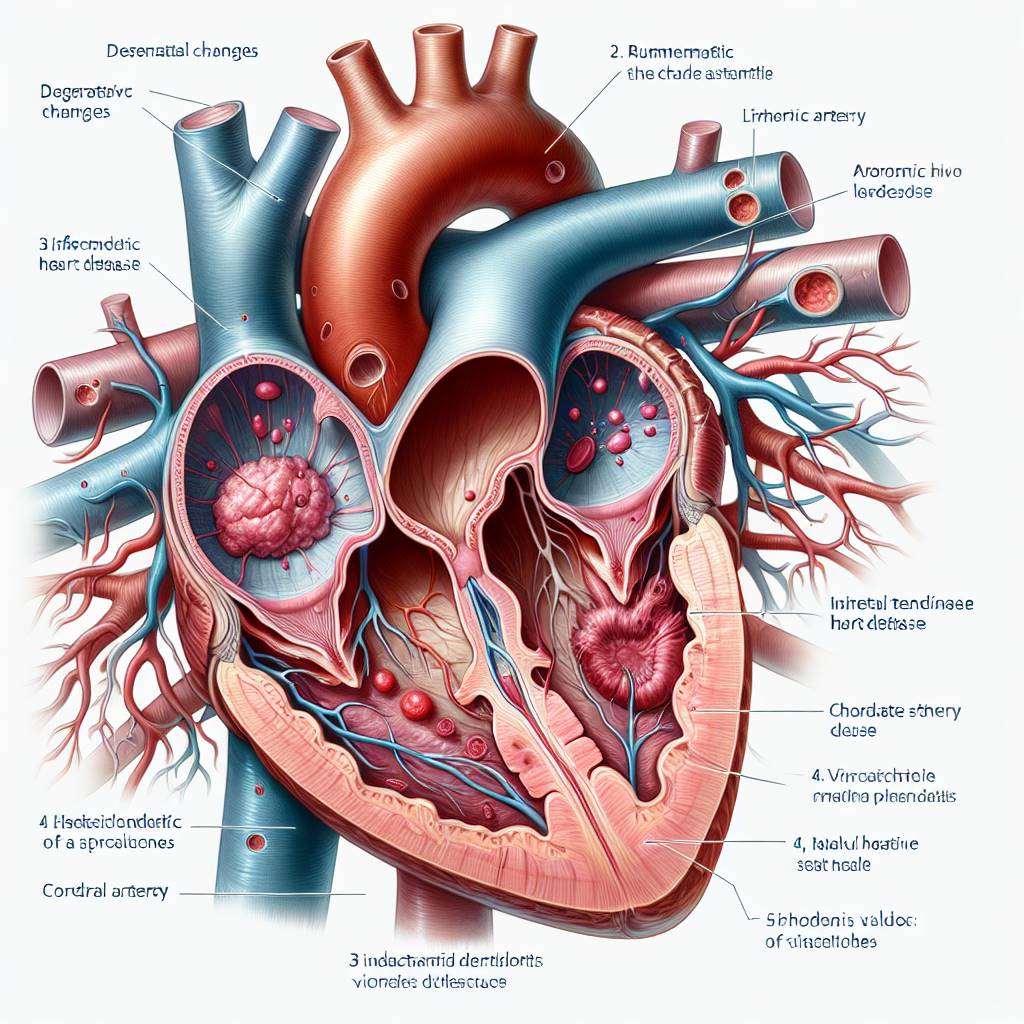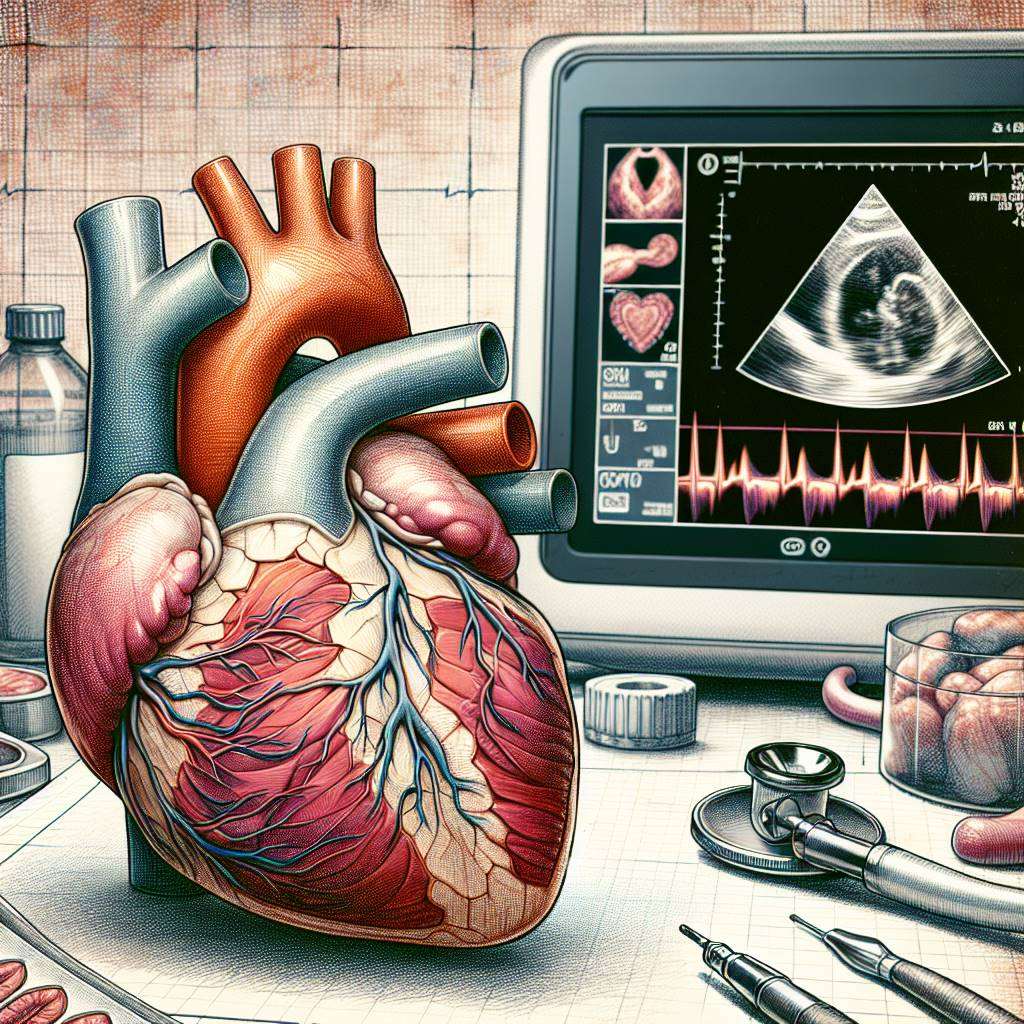The mitral valve is a critical structure in the human heart, ensuring proper blood flow between the left atrium and left ventricle. Its function is vital for maintaining healthy circulation and preventing complications like heart failure. Understanding the anatomy and role of the mitral valve helps patients and healthcare providers address potential cardiac disorders effectively.
Disorders of the mitral valve, such as mitral regurgitation or stenosis, can lead to serious health issues if left untreated. Advances in cardiac care and surgical techniques have made it possible to manage these conditions effectively. Raising awareness about the mitral valve's structure and function is essential for early diagnosis and treatment.
What Is the Mitral Valve and Its Role?
The mitral valve, also known as the bicuspid valve, is one of the four valves in the human heart. It is located between the left atrium and the left ventricle, playing a crucial role in regulating blood flow. The valve ensures that oxygen-rich blood flows from the left atrium into the left ventricle and prevents backflow during ventricular contraction.
This valve has two leaflets that open and close in coordination with the heart's pumping action. Proper functioning of the mitral valve is essential for maintaining efficient circulation and preventing conditions like mitral regurgitation, where blood leaks backward. Its role in maintaining unidirectional blood flow makes it a cornerstone of cardiovascular health.

Detailed Anatomy of the Mitral Valve Explained
The mitral valve is a complex structure composed of several key components. These include the anterior and posterior leaflets, the annulus (a fibrous ring), chordae tendineae (cord-like tendons), and papillary muscles. Each part works in harmony to ensure the valve opens and closes efficiently during the cardiac cycle.
The anterior leaflet is larger and more mobile, while the posterior leaflet is smaller but equally important. The chordae tendineae connect the leaflets to the papillary muscles, preventing them from prolapsing into the left atrium. The annulus provides structural support, ensuring the valve maintains its shape and function under pressure.
Understanding the anatomy of the mitral valve is crucial for diagnosing and treating conditions like mitral valve prolapse or stenosis. Advances in imaging techniques, such as echocardiography, have made it easier to study these structures in detail.
How the Mitral Valve Regulates Blood Flow
The primary function of the mitral valve is to regulate blood flow between the left atrium and left ventricle. During the diastolic phase of the cardiac cycle, the valve opens to allow oxygen-rich blood to flow from the left atrium into the left ventricle. During systole, the valve closes to prevent backflow into the atrium.
This one-way flow is critical for maintaining efficient circulation and ensuring that oxygenated blood is pumped out to the rest of the body. Any disruption in the valve's function, such as in mitral regurgitation, can lead to symptoms like fatigue, shortness of breath, and reduced exercise tolerance.
Proper functioning of the mitral valve depends on the coordination of its leaflets, chordae tendineae, and papillary muscles. When these components work together seamlessly, the heart can pump blood effectively, supporting overall cardiovascular health.
Layers of the Mitral Valve: Structure Breakdown
The mitral valve is composed of three distinct layers: the fibrosa, spongiosa, and atrialis. Each layer has a unique structure and function, contributing to the valve's overall durability and flexibility.
- Fibrosa: This is the outermost layer, providing structural strength and support to the valve.
- Spongiosa: The middle layer acts as a cushion, absorbing mechanical stress during the cardiac cycle.
- Atrialis: The innermost layer is rich in elastic fibers, allowing the valve to maintain its shape and flexibility.
These layers work together to ensure the valve can withstand the high pressures of the left ventricle while maintaining its functionality. Damage to any of these layers can lead to conditions like mitral valve prolapse or stenosis, highlighting the importance of their integrity.
Common Mitral Valve Disorders You Should Know
Disorders of the mitral valve can significantly impact heart function and overall health. Some of the most common conditions include:
- Mitral Regurgitation: A condition where the valve does not close properly, causing blood to flow backward into the left atrium.
- Mitral Stenosis: Narrowing of the valve, restricting blood flow from the left atrium to the left ventricle.
- Mitral Valve Prolapse: A condition where the valve's leaflets bulge into the left atrium, sometimes causing regurgitation.
Symptoms of these disorders may include fatigue, shortness of breath, palpitations, and swelling in the legs. Early diagnosis through imaging techniques like echocardiography is crucial for effective management. Treatment options range from medications to surgical interventions like valve repair or replacement.
Mitral Valve Anatomy: Structure, Function, and Common Disorders
What Causes Mitral Valve Dysfunction or Damage?
The mitral valve, located between the left atrium and left ventricle of the heart, plays a crucial role in ensuring proper blood flow. However, various factors can lead to its dysfunction or damage. One common cause is rheumatic heart disease, which results from untreated streptococcal infections. Over time, this condition can scar the valve, impairing its function.
Other causes include age-related degeneration, infections like endocarditis, and congenital abnormalities. Trauma or injury to the chest can also damage the mitral valve. Additionally, conditions such as mitral valve prolapse or calcification may weaken the valve's structure, leading to improper closure or leakage.
Risk factors include high blood pressure, a history of heart disease, and certain autoimmune conditions. Early diagnosis and treatment are essential to prevent complications.

Mitral Valve Prolapse: Symptoms, Causes, and Treatment
Mitral valve prolapse (MVP) is a condition where the valve's leaflets bulge or "prolapse" into the left atrium during heart contractions. This can lead to mitral regurgitation, where blood leaks backward into the atrium. While MVP is often harmless, some individuals may experience symptoms such as chest pain, palpitations, or fatigue.
The exact cause of MVP is not always clear, but it is often linked to genetic factors or connective tissue disorders like Marfan syndrome. Diagnosis typically involves an echocardiogram to assess valve function.
Treatment depends on the severity of the condition. Mild cases may require no intervention, while severe cases might need medications like beta-blockers or even surgical repair. Regular monitoring is essential to manage MVP effectively.
Understanding Mitral Regurgitation and Its Impact
Mitral regurgitation occurs when the mitral valve does not close tightly, allowing blood to flow backward into the left atrium. This can lead to symptoms such as shortness of breath, fatigue, and swelling in the legs or feet. Over time, untreated regurgitation can strain the heart and lead to complications like heart failure.
Common causes include mitral valve prolapse, rheumatic heart disease, and damage from a heart attack. Diagnosis often involves imaging tests like echocardiography or cardiac MRI to evaluate the severity of the leakage.
Treatment options include medications to reduce symptoms and improve heart function. In severe cases, surgical interventions like valve repair or replacement may be necessary. Early detection and management are crucial to prevent long-term complications.
Mitral Stenosis: Causes, Symptoms, and Management
Mitral stenosis is a condition where the mitral valve becomes narrowed, restricting blood flow from the left atrium to the left ventricle. This can cause symptoms such as breathlessness, fatigue, and irregular heartbeats. In severe cases, it may lead to complications like pulmonary hypertension or heart failure.
The most common cause of mitral stenosis is rheumatic fever, which can scar and thicken the valve. Other causes include congenital defects or calcium deposits on the valve. Diagnosis typically involves an echocardiogram to measure the valve's opening and assess blood flow.
Management options include medications to control symptoms and prevent complications. In advanced cases, procedures like balloon valvuloplasty or valve replacement surgery may be required. Early treatment can significantly improve outcomes.
| Management Option |
Purpose |
| Medications |
Control symptoms and prevent blood clots |
| Balloon Valvuloplasty |
Widen the narrowed valve |
| Valve Replacement |
Replace the damaged valve with a prosthetic |
How Mitral Valve Disorders Affect Heart Function
The mitral valve plays a vital role in maintaining efficient blood flow between the heart's chambers. When disorders like mitral regurgitation or mitral stenosis occur, they disrupt this flow, causing the heart to work harder to pump blood.
Over time, this increased workload can lead to complications such as left atrial enlargement, pulmonary hypertension, or even heart failure. Symptoms like fatigue, breathlessness, and swelling are common indicators of impaired heart function.
Early diagnosis and treatment are crucial to prevent long-term damage. Lifestyle changes, medications, and surgical interventions can help restore normal heart function and improve quality of life for patients with mitral valve disorders.
Diagnostic Tests for Mitral Valve Abnormalities
To diagnose mitral valve abnormalities, doctors rely on a combination of imaging and functional tests. One of the most common methods is an echocardiogram, which uses sound waves to create detailed images of the heart's structure and function.
Other diagnostic tools include chest X-rays, which can reveal heart enlargement, and cardiac MRI, which provides a more comprehensive view of the heart's anatomy. In some cases, a transesophageal echocardiogram (TEE) is performed to get a closer look at the mitral valve by inserting a probe into the esophagus.
- Electrocardiogram (ECG) to detect irregular heart rhythms.
- Stress tests to evaluate heart function under physical exertion.
- Cardiac catheterization for detailed pressure measurements.
These tests help identify conditions like mitral valve prolapse, stenosis, or regurgitation, enabling timely treatment.

When Is Surgery Needed for Mitral Valve Issues?
Surgery is often required when mitral valve disorders cause severe symptoms or complications. Conditions like mitral regurgitation, where blood flows backward into the left atrium, or stenosis, where the valve narrows, may necessitate surgical intervention.
Patients experiencing persistent symptoms such as shortness of breath, fatigue, or chest pain despite medication are prime candidates for surgery. Additionally, if diagnostic tests reveal worsening heart function or an enlarged left atrium, surgery becomes essential to prevent long-term damage.
Common surgical options include mitral valve repair, which preserves the natural valve, and replacement using mechanical or biological prosthetics. The choice depends on the patient's age, overall health, and the severity of the condition.
Latest Advances in Mitral Valve Repair Techniques
Recent advancements in mitral valve repair have significantly improved outcomes for patients. Minimally invasive procedures, such as robotic-assisted surgery, allow for precise repairs with smaller incisions, reducing recovery time and complications.
Another breakthrough is the use of transcatheter mitral valve repair (TMVR), which is a non-surgical option for high-risk patients. This technique involves inserting a clip or device via a catheter to correct valve dysfunction. TMVR is particularly beneficial for elderly patients or those with multiple health issues.
Additionally, 3D imaging and printing technologies are now being used to create patient-specific models, enabling surgeons to plan and execute repairs with greater accuracy. These innovations are transforming the treatment landscape for mitral valve disorders.
Preventing Mitral Valve Disorders: Tips and Advice
Preventing mitral valve disorders involves maintaining good heart health and addressing risk factors early. Regular check-ups with a cardiologist can help detect issues before they become severe. Managing conditions like high blood pressure and diabetes is crucial for reducing strain on the heart.
Adopting a heart-healthy lifestyle is equally important. This includes eating a balanced diet rich in fruits, vegetables, and whole grains, exercising regularly, and avoiding smoking and excessive alcohol consumption. Maintaining a healthy weight also reduces the risk of developing valve-related problems.
For individuals with a history of rheumatic fever, taking antibiotics as prescribed can prevent complications that may lead to mitral valve disease. Early intervention and lifestyle changes are key to preventing long-term heart issues.
Living with a Mitral Valve Condition: What to Expect
Living with a mitral valve condition requires ongoing management and lifestyle adjustments. Patients may need to take medications such as beta-blockers or anticoagulants to manage symptoms and prevent complications like blood clots.
Regular follow-ups with a cardiologist are essential to monitor heart function and detect any changes in the condition. For those who have undergone surgery, adhering to post-operative care instructions is critical for recovery and long-term success.
Emotional well-being is also important. Joining support groups or seeking counseling can help patients cope with the challenges of living with a chronic condition. With proper care and a positive outlook, many individuals lead fulfilling lives despite their diagnosis.
Best Mitral Valve Replacement Surgery Doctors in India
Dr. Naresh Trehan, Chairman and Managing Director of Medanta - The Medicity, Gurugram, is a renowned cardiac surgeon with over 40 years of experience. He holds an MCh in Cardiothoracic Surgery and has extensive international exposure. Another expert is Dr. Balbir Singh, Chairman of Cardiology at Max Super Speciality Hospital, Delhi, with 30+ years of experience and expertise in interventional cardiology.
Learn more on best mitral valve replacement surgery doctors in india
Best Mitral Valve Replacement Surgery Hospitals in India
Fortis Escorts Heart Institute, Delhi, a NABH-accredited hospital, is known for advanced robotic cardiac surgeries and multidisciplinary care. Another leading center is Medanta - The Medicity, Gurugram, offering cutting-edge treatments like minimally invasive valve repair and comprehensive international patient services. Both hospitals have a strong track record of success stories in cardiac care.
Find more best mitral valve replacement surgery hospitals in india
Mitral Valve Replacement Surgery Cost in India
The cost of Mitral Valve Treatment in India typically ranges from INR 2,50,000 to 6,00,000 (approximately USD 3,000 to 7,500). Factors like the doctor’s expertise, hospital infrastructure, and procedure complexity influence pricing. The average hospital stay is around 5-7 days. India offers a significant cost advantage compared to Western countries, with options for insurance coverage and third-party financing.
Learn mitral valve replacement surgery cost in india
Mitral Valve Replacement Surgery Treatment in India
Mitral Valve Treatment in India involves advanced techniques like minimally invasive surgery, robotic-assisted procedures, or transcatheter mitral valve repair. The process includes diagnosis, pre-surgical preparation, the procedure itself, and post-operative care. Recovery timelines vary but are typically 2-4 weeks. Indian hospitals adhere to global medical standards and adopt innovations to ensure optimal outcomes.
Learn on Mitral Valve Replacement Surgery Treatment in India
FAQs
What is the function of the mitral valve?
The mitral valve regulates blood flow between the left atrium and left ventricle of the heart, ensuring unidirectional flow and preventing backflow.
What are common disorders of the mitral valve?
Common disorders include mitral valve prolapse, mitral regurgitation, and mitral stenosis, which can affect blood flow and heart function.
What are the symptoms of mitral valve disease?
Symptoms may include shortness of breath, fatigue, chest pain, and irregular heartbeats. Severe cases may lead to heart failure.
How is mitral valve disease diagnosed?
Diagnosis involves a physical examination, echocardiography, chest X-rays, and sometimes cardiac MRI or cardiac catheterization.
What are the treatment options for mitral valve disorders?
Treatment options include medications, mitral valve repair, or mitral valve replacement, depending on the severity and type of disorder.
What is the recovery time after mitral valve surgery?
Recovery typically takes 2-4 weeks for minimally invasive procedures and up to 6-8 weeks for open-heart surgeries.
Are mitral valve treatments in India safe?
Yes, Indian hospitals follow international medical protocols, and many are JCI/NABH-accredited, ensuring high standards of safety and care.
Can mitral valve disorders be prevented?
While some conditions are congenital, others can be prevented by managing risk factors like high blood pressure, rheumatic fever, and heart infections.
What are the risks of mitral valve surgery?
Risks include infection, bleeding, blood clots, and arrhythmias, but these are minimized with advanced techniques and experienced surgeons.
How do I choose the right hospital for mitral valve treatment in India?
Look for hospitals with NABH/JCI accreditation, experienced cardiac surgeons, and advanced facilities like robotic surgery and international patient services.
Advancements in Mitral Valve Interventions and Imaging Techniques
The field of cardiology is witnessing remarkable advancements, particularly in the management of mitral valve diseases. One of the most promising areas is the development of percutaneous mitral valve interventions, which are set to revolutionize treatment options. For an in-depth look at the future of these interventions, check out our blog on Percutaneous Mitral Valve Interventions: What's Coming Next?.
In parallel, the role of advanced imaging techniques, such as 3D echocardiography, is becoming increasingly vital in diagnosing and managing complex mitral valve cases. This technology enhances the visualization of valve structures, aiding in more precise interventions. To learn more about how 3D echocardiography is applied in these challenging scenarios, visit our article on 3D Echocardiography in Complex Mitral Valve Disease Cases.
As these innovations continue to evolve, they promise to improve patient outcomes and redefine the standards of care in mitral valve disease management.